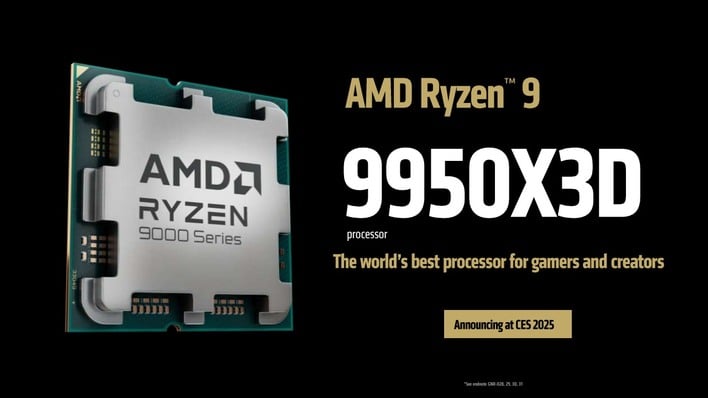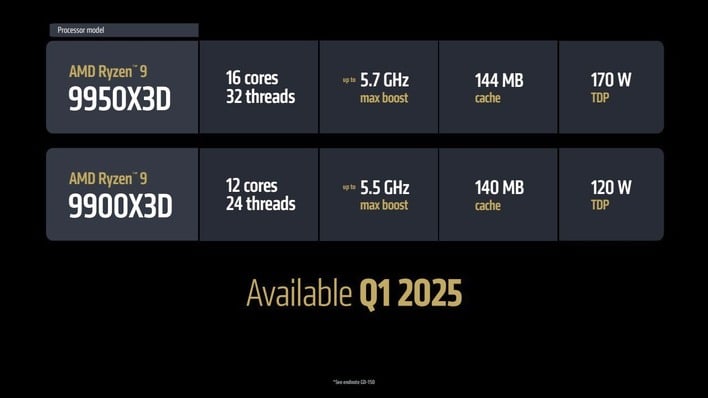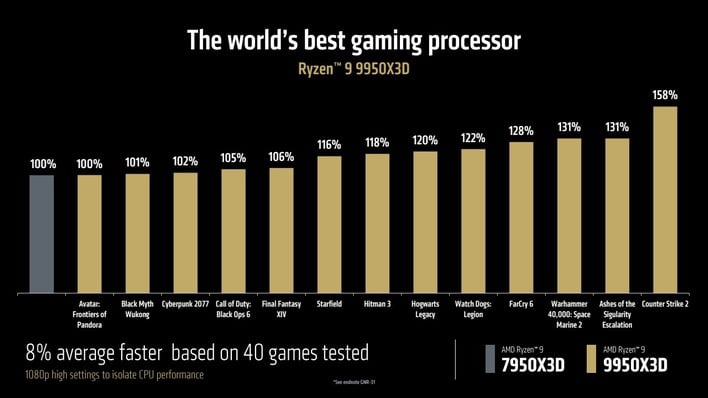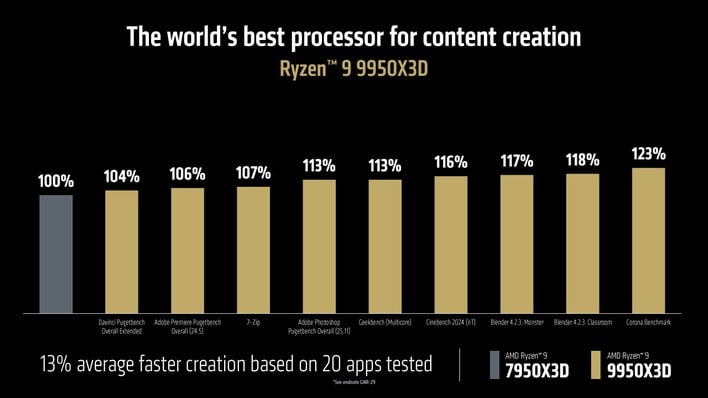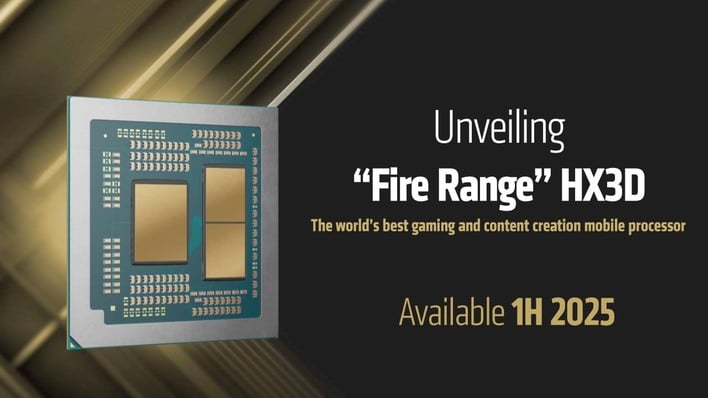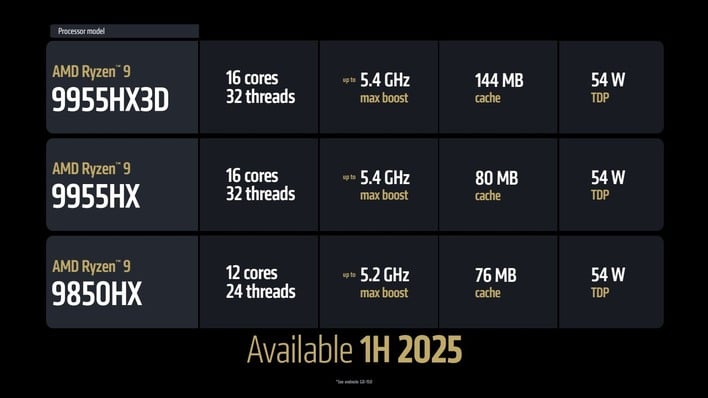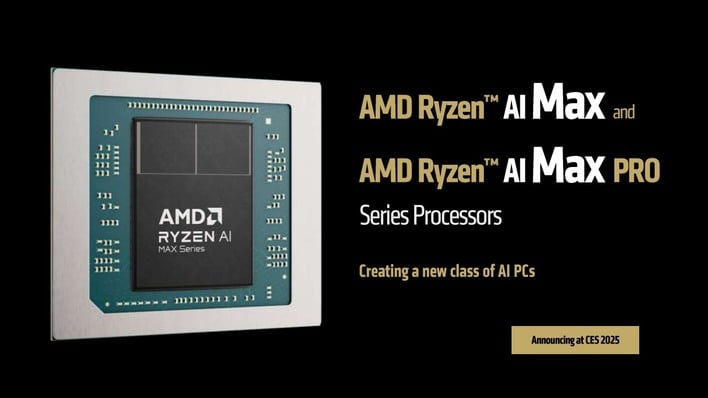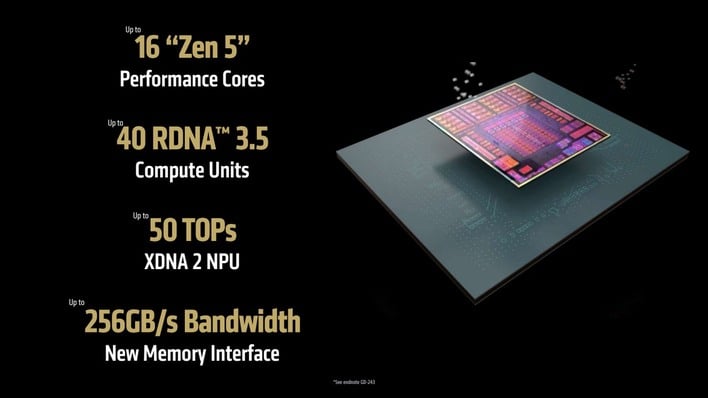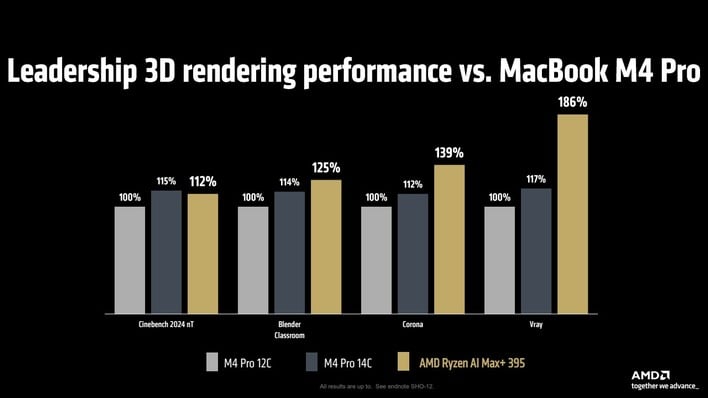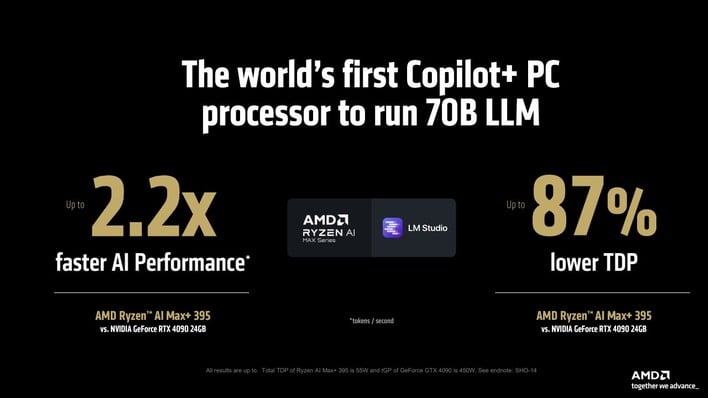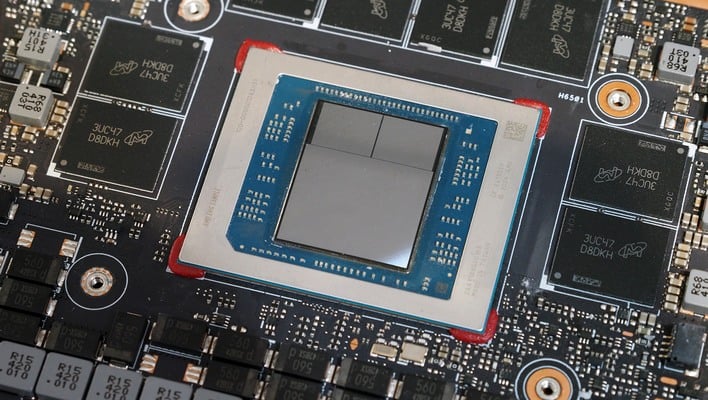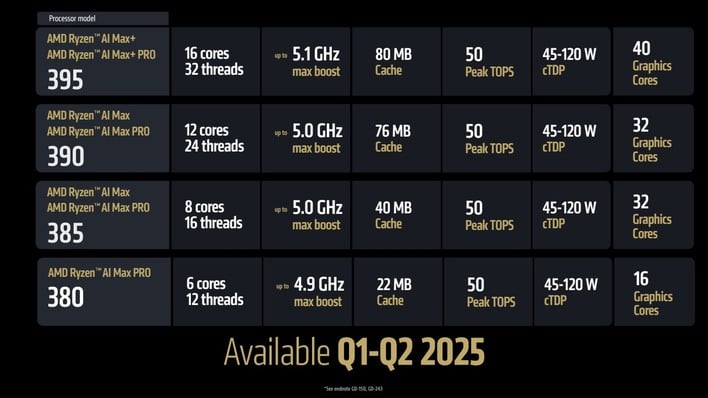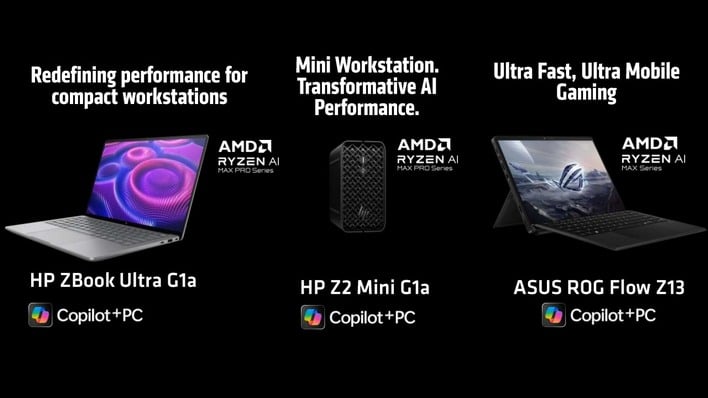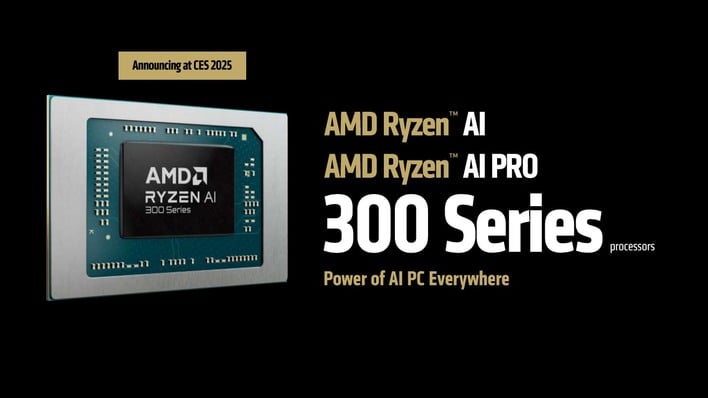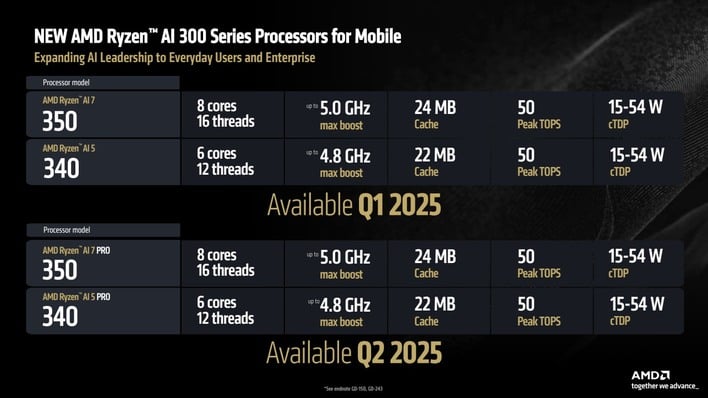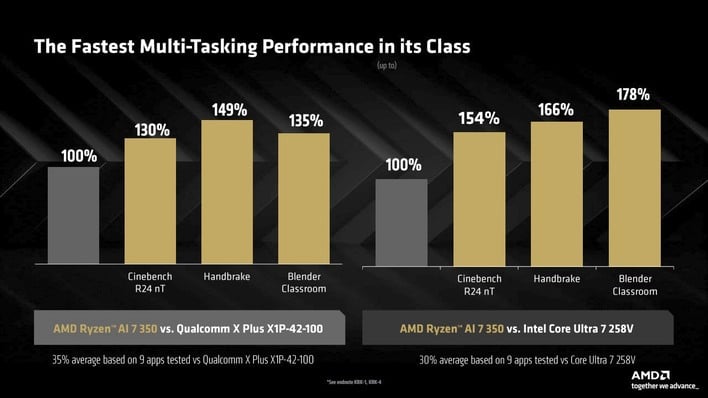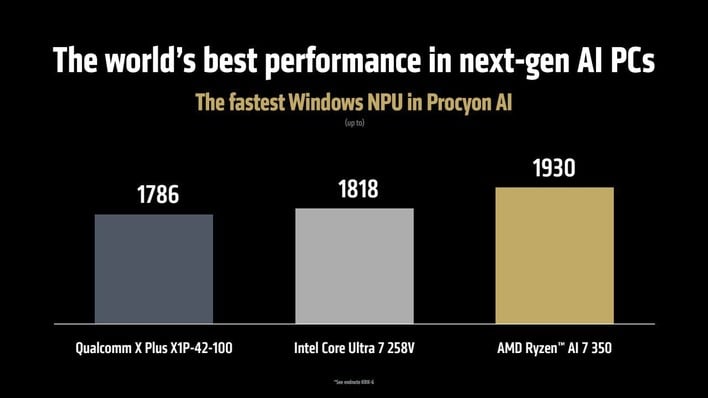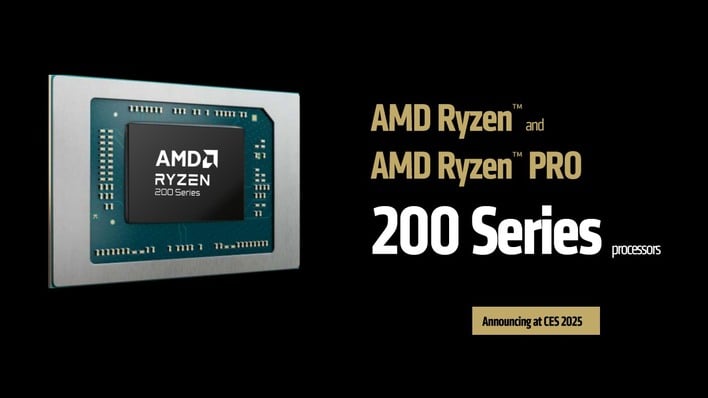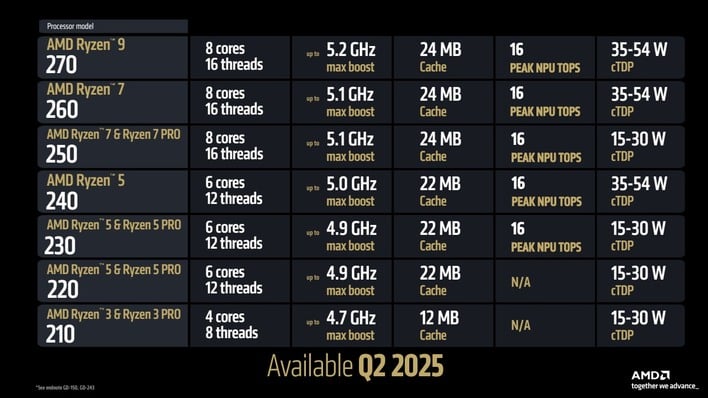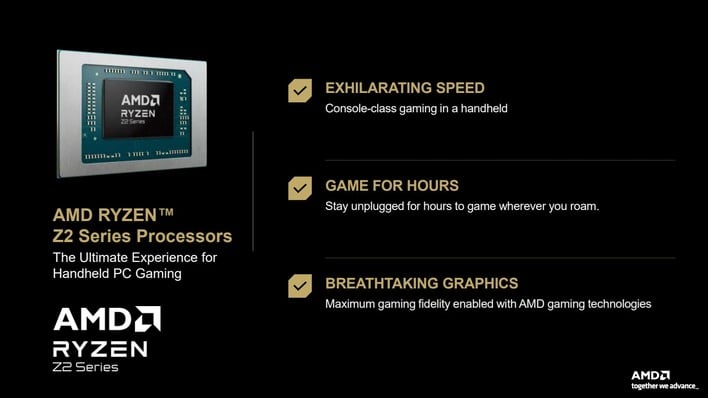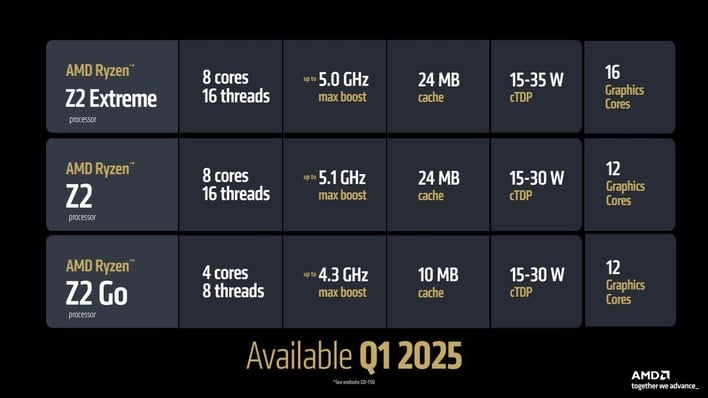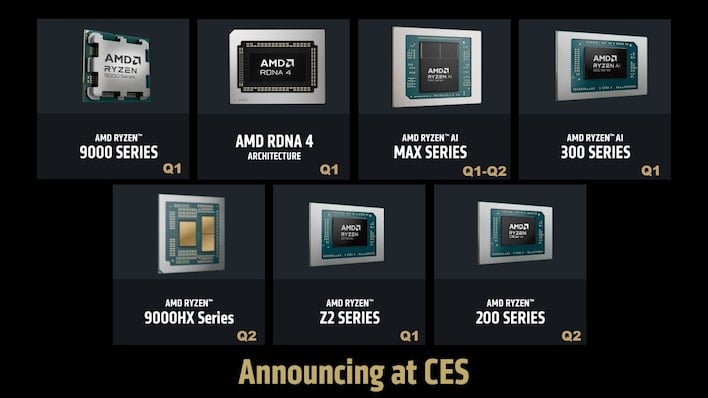AMD Chip Onslaught: Ryzen 9 9950X3D, 9900X3D, 3D V-Cache CPUs For Laptops And More
Let's start where AMD did: the rest of the Ryzen 9000 desktop CPUs with 3D V-Cache. As anyone could have predicted, the next two V-Cache CPUs are the Ryzen 9 9900X3D and Ryzen 9 9950X3D. You get 12 or 16 Zen 5 CPU cores, and skeptics can feel smug: only one of the two CCDs on these chips gets the stacked SRAM cache applied. In that sense, they're just like the extant Ryzen 7000X3D parts.
AMD promises an overall 8% performance gain over the Ryzen 9 7950X3D, which is roughly in line with what we saw going from Ryzen 7 7800X3D to Ryzen 7 9800X3D. Indeed, AMD says that the Ryzen 9 9950X3D offers very similar gaming performance to that part, so what's the point? Well, the extra eight CPU cores, of course. Just like on the extant Ryzen 9 7950X3D, the other eight cores can clock to the full 5.7GHz of the Ryzen 9 9950X, so you basically get the best of both worlds, at least in theory.
If you jive with what we just looked at but can't dig on a desktop form factor, those very same CPUs will be available in mobile form as the "Fire Range" processors. Essentially just Granite Ridge with a lower TDP and BGA package, the Ryzen 9 9000HX processors are coming with 12 or 16 cores, and optionally, 3D V-Cache. No word on a Ryzen 7 9800HX3D or so, but a man can dream. These parts will apparently be available in the first half of this year.
Continuing the topic of powerful mobile processors, AMD will let you go even bigger than Fire Range with the new Ryzen AI Max chips. Yep, this is "Strix Halo," the long-rumored Ryzen SoC with everything: up to 16 Zen 5 CPU cores, 40 RDNA 3.5 compute units, and a hot-clocked double-wide memory bus to feed it all. AMD says that these parts "create a new class of AI PCs," and we can't really argue.
AMD presents some benchmarks comparing Strix Halo to an Intel Lunar Lake processor, which is frankly kind of odd considering the difference in product class and die area. The two benchmarks above are much more compelling: rendering performance as compared to Apple's M4 SoCs, and AI performance against NVIDIA's GeForce RTX 4090. While you might say the latter is a bit cherry-picked, it does highlight a real advantage of a machine with a huge unified memory pool.
Here are the Ryzen AI Max/Max+ models on the way. The top-end "Max+" configuration is certainly beefy, but we have our eyes on the Ryzen AI Max 385. Its eight CPU cores are more than enough for gaming, and the fact that it retains 32 RDNA 3.5 GPU compute units could make it an outstanding value as a set-top gaming SoC, if someone were to make such a product, *cough* Valve* cough*.
AMD presents three upcoming products using these parts that will likely be on display on the show floor, including both mini- and mobile workstations from HP as well as the previously-leaked ROG Flow Z13 gaming tablet from ASUS. We're dying to see how the Ryzen AI Max part compares to the same tablet when configured with an Intel CPU and discrete NVIDIA GPU.
Of course, we're not done yet; AMD's also announcing the rest of the Ryzen AI 300 series. Recall that the "Strix Point" Ryzen AI 300 parts, launched in Q3 of last year, only included Ryzen 9 processors. Well, now we have the remainder: the Ryzen AI 7 350 and Ryzen AI 5 340 are attractive options for folks who want a capable laptop without spending out the nose for the "premium" Ryzen AI 9 parts.
The data that AMD presents compares the eight-core Ryzen AI 7 350 against both Intel's Lunar Lake and Qualcomm's Snapdragon X Plus and claims victory in a small selection of benchmarks. The other benchmarks besides the ones shown were apparently Handbrake, 7-Zip, PCMark 10, and some PugetBench tests; overall, these are productivity-focus parts.
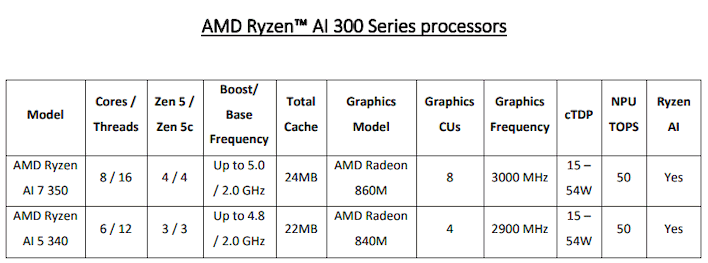
Notably, the specifications for the CPUs that AMD sent out separately delineate these chips as being Kraken Point, not cut-down Strix parts. Just as we posited last week, Kraken Point does appear to come with four Zen 5 cores and four Zen 5c cores, not the eight Zen 5c cores that some assumed. It also comes with a smaller GPU and less cache, although the NPU remains at the required 50 TOPS level for Microsoft's Copilot+ PC designation.
AMD additionally launched the Ryzen 200 series. These appear to largely be refreshed Hawk Point silicon, judging from the specifications: up to eight Zen 4 CPU cores, Radeon 780M RDNA 3-based graphics, and the familiar 16-TOPS NPU. Hawk Point is still an extremely capable processor; if these parts find their way into budget laptops, those could be some phenomenal price-performance values.
Last but not least, and continuing the topic of refreshing older silicon, we have the Ryzen Z2 series processors. That's not to say that all of the Ryzen Z2 series are rehashes, though. At the top-end, we have the Ryzen Z2 Extreme, which appears to be based on a cut-down Strix Point part. It boasts three Zen 5 cores and five Zen 5c cores as well as the full sixteen RDNA 3.5 CUs, meaning it should offer phenomenal handheld gaming performance.
The refresh part comes in with the Ryzen Z2 and Ryzen Z2 Go chips. The Ryzen Z2 is fundamentally a Ryzen Z1 Extreme part, being based on the same Hawk Point silicon. It still offers solid performance, so we understand this decision. Finally, the Ryzen Z2 Go is a quad-core SoC with Zen 3 CPU cores and twelve RDNA 2 compute units. Cache takes a hit, as expected, and so do clock rates, but it should be very efficient at these speeds.
This is heavily cut-down Rembrandt silicon, and should also be quite affordable by this point. Lest you think it's too weak, allow us to remind you that this is still a noted step up from the AMD chip in Valve's Steam Deck. However, it doesn't stretch down to the 9W TDP that the "Aerith" and "Sephiroth" parts can, either. The Ryzen Z1 line were all spec'd for 9-30W, but performance below 15W was underwhelming, so perhaps the 15-30W rating on these is a reality check for the next-gen.
Almost all of the CPUs announced today should be available by the end of Q1. The "Pro" processors might take a bit longer, and the "Fire Range" desktop-on-mobile CPUs may not appear until Q2, but otherwise we're pretty much looking at Q1 for all of these chips. We're excited to see how AMD's latest creations fare, particularly the Strix Halo and Ryzen Z2 chips, so it's great that we won't have long to wait.

